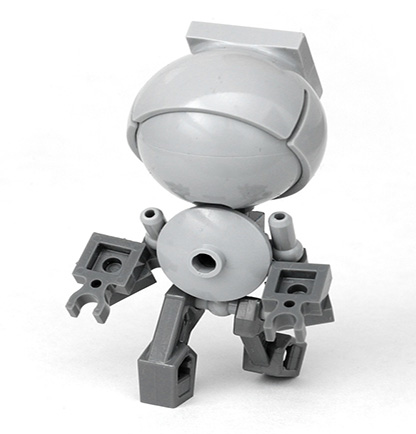
The collision of marketing and robotics: robots at your service
**As rights to this article belong to the original publisher, The Australian, please contact them for permission to republish.**

Marketers have long had a fascination with robots. They’ve been the stars of TV ads for brands like IBM, Audi, Schick and Honda. A green robot is the instantly recognised logo of Android. But recently marketers have been most excited about the growing ability of robots to provide customer service.
By definition a robot is mechanical technology combined with Artificial Intelligence. And for marketers chasing the holy grail of highly personalised and relevant communications to every one of their customers, it seems like a combination made in heaven.
Robots in their most iconic form are now helping customers in retail stores, hotels and airports around the world. US home hardware giant Lowes announced two years ago that it was trialling OSHbot, a robotised sales assistant rolling around their stores. Its main use was to help customers with directions, and it could even scan that last screw or nail you brought from home and show you where to find a new packet of them in the store.
Similarly, LG showcased its airport guide robot at this year’s Consumer Electronics Show, and it’s planning to roll it out at Seoul’s International Airport later in 2017. It helps passengers looking for their departure gate and also updates travellers on the weather in the city they’re flying to.
At the same show, marketers were introduced to a robot for the hospitality industry called HEASY. It can welcome guests, answer questions and provide information. If the guest wants to talk with a real person, it turns on a “telepresence” mode to connect them to a staff member.
Similarly in the home, Emotech’s Olly and LG’s Hub will soon be at the beck and call of occupants. Linked to all the house’s smart devices through the Internet of Things (IOT), they will respond to simple voice commands to turn the lights, oven, washing machine and kettle on and off. Hub will even scan the contents of your fridge, offer up some recipe suggestions, guide you through the preparation and cooking, and re-order the ingredients for next time.
Olly will learn more and more about you with each interaction. For rational types, Olly converses in a more direct and data driven manner. For the inquisitive, it talks faster, is more pro-active and provides more suggestions. According to media agency Zenith, this sort of emotion recognition will be one of the biggest Artificial Intelligence trends this year, and will help bridge the gap from robot to human interactions as marketers strive to deliver those customised service experiences.
Beijing Ewaybot Technology’s MoRo goes one step further, running errands for the household. It is four feet tall, with arms and hands with three fingers, and can pick up items off the ground or from shelves. “Robot friendly” signs might soon sit side by side with “American Express accepted here” on shop windows.
One of the other robotic trends in the customer service space is chatbots. These are essentially Artificial Intelligence programs designed to enable real time conversations between a machine and a customer, either via voice or text. Again for marketers there is a delicate balance around what sort of customer service people are willing to receive via chatbots and those times they would like to talk to a real person.
Banking and insurance companies have been quick to develop chatbots, to fast track answering frequently asked questions, as well as speed up application and transaction processes, and enable such customer service 24/7.
US insurance company Lemonade’s chatbot can sign you up to a relevant product, and help you with a claim.
YES Bank in India’s chatbot works within Facebook’s Messenger platform, and guides customers through their various loan products, and lets them know whether the customer is eligible for it or not.
And in late 2016, Royal Bank of Scotland announced its chatbot would tap into IBM’s Watson to enable consumers to use everyday language to converse with it. The other advantage is Watson’s ability to use the data from these conversations to provide more personalised interactions with that customer in the future, maximising their marketing efforts.
A recent survey by Accenture in the UK showed that more than six out of 10 customers were happy to receive such financial advice from Artificial Intelligence programs.
Customer service marks the beginning of the collision between marketing and robotics. Already there are Artificial Intelligence marketing robots planning eCommerce digital marketing strategies, and others that are developing marketing content. Further to this, there are robots optimising merchandise layouts on shelves in store, and filling orders in companies’ warehouses.
It’s an exciting addition to the armoury that marketers can draw on, and one that more curious and innovative practitioners are already investing in.
This article was originally published on The Australian. Read the original article.
Thought leader, marketer and board director, Andrew Baxter is the Senior Advisor at KPMG's entrepreneurial Customer, Brand & Marketing Advisory business, a Senior Advisor at BGH Capital, as well as the Adjunct Professor of Marketing at the University of Sydney, and a Non-Executive Director at Australian Pork and Sydney Symphony Orchestra.
Share
We believe in open and honest access to knowledge. We use a Creative Commons Attribution NoDerivatives licence for our articles and podcasts, so you can republish them for free, online or in print.







